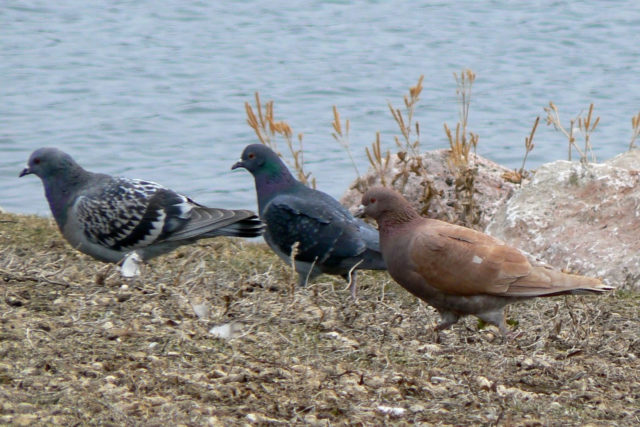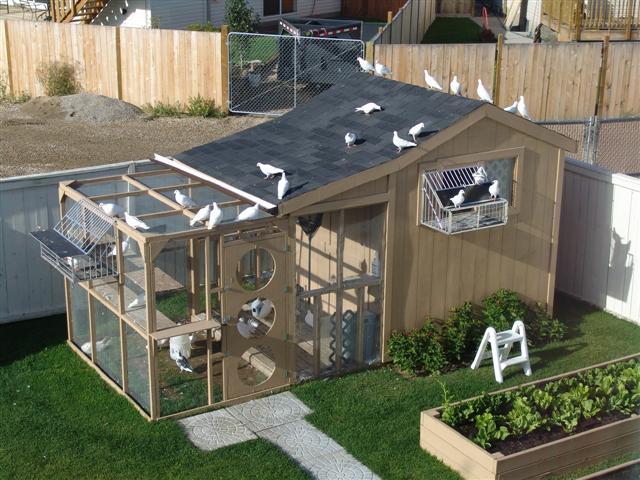Content
On the territory of Russia, out of 35 species of pigeons, four live: dove, wood pigeon, clintuch and rocky. However, the most common rock dove, since it refers to a synanthropic species of birds, in simple words, is able to live and reproduce next to humans. How many pigeons live in wild, urban or domestic conditions, as well as what affects their lifespan, is described in this article.
Where do pigeons live
Pigeons live in Eurasia, and are also found in Asia, Africa, India and Saudi Arabia. Birds of this genus initially took a fancy to the coastal seas and rocks, today they are found near human dwellings, as well as in megacities, cities and towns.
This species of birds leads a sedentary way of life. In nature, they live on rocks - up to 4000 meters above sea level. In winter, they move vertically downward, fleeing severe cold and winds.
In cities, these birds build houses in such places:
- roofs of houses;
- spreading trees;
- under the canopies of the balconies;
- fire pipes;
- voids under the surfaces of bridges.
Since wild pigeons avoid contact with any other species of fauna, in the city they try to avoid such a neighborhood. However, getting used to humans, birds build primitive nests and live close to those places where they find food and water, despite their forced neighbors. At the same time, only the male should obtain material for building the nest, and the female builds a dwelling.
How many pigeons live
Theoretically, according to the conclusions of ornithologists, based on long-term observations, pigeons live in favorable conditions for up to 20-25 years. In fact, only a few members survive to this age. The lifespan of birds is directly influenced by climatic conditions, habitat. It is known that wild representatives of the genus live much less urban and, moreover, domestic ones, who do not need anything and live in a warm and cozy dovecote.
In nature
Wild pigeons living at a distance from humans are found in forests, steppes, on steep river banks and mountain gorges. In the incessant search for food, birds are exposed to many dangers. Therefore, unlike urban pigeons, sisari that live in the wild are extremely shy. It is this quality that is the key to life in such conditions and allows you to grow offspring in an environment that is constantly threatening life.
The following factors affect the lifespan of wild pigeons:
- attack of predators;
- infectious diseases;
- very coldy.
According to research by ornithologists, in nature, wild pigeons live on average from 3 to 5 years, and the recorded maximum did not exceed 7 years. This is a very short period for a pigeon, because in nature it is more likely to play the role of a victim, which is forced to survive every minute of its life in order to leave behind as many offspring as possible.
Especially strongly the lifespan of wild pigeons is affected by the coincidence of their habitat with many other birds that are carriers of infectious or invasive diseases, from which sisars do not have immunity. Outbreaks of such diseases significantly reduce the number of birds living in nature.
In the town
The pigeons living in the city, busily pacing the squares and alleys, are the descendants of wild cisars who, in an effort to survive, moved from the forests closer to humans. They are born and then live their whole life in the city without flying anywhere. In settlements, there are not so many predators of birds that threaten the life of birds, and it is much easier to find food and water. This made the naturally shy pigeons less alert, and they often die from the paws of cats or dogs, as well as under the wheels of cars. In addition, in northern latitudes with harsh climatic conditions, urban pigeons, like wild ones, die without surviving a long frosty winter.
But, despite the danger of being killed by a cat or under the wheels of a transport, urban pigeons live almost twice as long as their wild counterparts. In addition, there are no wild birds carrying infections in the city, and therefore city dwellers are much less likely to get sick.
At home
Domestic pigeons live on average 7-10 years longer than urban ones. As breeders are constantly improving existing breeds, working to strengthen their immunity and longevity. Today, birds in pigeon houses heated in winter can live up to 20-25 years. However, until this age, pigeons live only being born in captivity and having an improved gene pool. Urban or wild pigeons, even in favorable conditions, are not able to live for more than 13-15 years.
However, this is not the limit. According to unofficial data, there is information according to which some representatives of these birds lived up to 35 years.
What affects the lifespan of pigeons
The lifespan of a pigeon directly depends on factors such as:
- climatic conditions;
- diet;
- immunity;
- breed.
The climatic conditions in which birds live, as well as their diet, affect how old the bird will live. In regions with long, harsh and snowy winters, pigeons live several years less than in regions with a milder climate. This is due to the fact that they spend more strength and energy to get food under a thick layer of snow. In addition, a lot of energy is spent on finding shelter from winds, precipitation and frost. Many individuals die precisely from malnutrition and hypothermia. It is also noticed that even domestic pigeons live in northern latitudes somewhat less than in southern ones.
In addition, the breed and disease resistance affect the age of the bird. Domestic purebred pigeons, receiving full and balanced nutrition, as well as timely treatment, acquired innate immunity over several generations, therefore they get sick less often. Wild and urban pigeons, eating irregularly and with whatever they have to, cannot boast of good health and die in flocks from various infections. Also, not receiving the elements necessary for life, the body wears out faster, which affects the life of the birds.
How to understand how old a pigeon is
To record the age of the bird, pigeon breeders ring their pets. The ring on the paw is, so to speak, a dove's passport, which indicates the date and place of its birth. If there is no ring, age is recognized by some external characteristics:
- up to 1 month - yellow down on the feathers, the base of the nose is without plumage, the beak is soft, long and thin;
- at 3-4 months - the beak is hard, wide and short; the iris is bright orange or yellowish;
- if the individual is medium-sized, coos quietly and sometimes makes squeaking sounds - about 2.5 months;
- if the bird shows interest in the opposite sex, in the form of courtship - more than 5 months;
- traces of molting are visible, while the formation of wax is observed, which is still tender - 7 months;
- wax (nose) and eye rings are already a little rough - about 4 years old;
- pale pigmentation of the legs indicates that the pigeon is over 5 years old.
In addition, the youth of the bird is indicated by not such a bright color of feathers and without overflow as in adults, especially in males. It is visually difficult to determine how old the pigeon really is, so the resulting figure will be approximate.
Conclusion
The climatic conditions in which pigeons live, as well as their habitat and diet, directly affect life expectancy. In the wild or in the city, none of the representatives of these birds die a natural death. And only domestic pigeons that live in a well-equipped dovecote and lead a carefree way of life are able to reach a ripe old age.












